HTC One max Review - It's Huge
by Brian Klug on October 28, 2013 10:00 AM EST- Posted in
- Smartphones
- HTC
- Mobile
- One
- Snapdragon 600
- Android 4.3
- One max
The performance section is probably a good place to talk about one of the elephants in the room, and that’s the SoC inside the One max. The One max includes a Snapdragon 600 APQ8064T SoC, which consists of 4 Krait 300 cores running at up to 1.7 GHz, and Adreno 320 GPU, all built on TSMC’s 28nm LP process. This is the same SoC that shipped in the original HTC One, and the same 1.7 GHz bin as well. There have been three major variants or families of APQ8064(T) to date. There first was the option for the earliest 1.5 GHz Snapdragon S4 Pro version (AA suffix), the 1.7 GHz “8064T/Pro” variant in the HTC One and One max (AB suffix) which began the Snapdragon 600 branding, and finally the 1.9 GHz CPU and 450 MHz GPU variant we first saw in the SGS4 (AC suffix). Qualcomm usually has a number of revisions of its silicon, and with APQ8064 we saw quite a few. As an aside, expect similar with 8974 or Snapdragon 800.
There’s nothing wrong with the 1.7 GHz Snapdragon 600 variant, it was and still is a great performer, but the reality is that HTC falls behind on its hardware platform with the One max by not going to Snapdragon 800 (MSM8974) like the rest of the competition (Note 3, ASUS Padfone Infinity 2014, LG G2, Nexus 5, and so on). So much of the SoC performance and power story right now is gated by process, and 8974 moves to TSMC’s high-k metal gate 28nm HPM process which affords some clock headroom (up to 2.3 GHz) and lower power consumption at lower performance states for Krait 400 (which is essentially 300 implemented on that new process). 8974 also brings a beefier Adreno 330 GPU with more ALUs and higher clocks, in addition to the new modem IP block, but I won’t go over all of that.
It’s pretty obvious to me that the One max stays with the same SoC used in the original One for a few reasons which ultimately boil down to cost and margin. It obviously means HTC can share the same SoC between the One and One max, and since it’s later in APQ8064’s lifespan I would suspect HTC was able to secure good pricing for it. Having closer shared hardware platform means about the same software stack on top of it, and the same source tree from Qualcomm (BSP) for building and testing ROMs. This makes the software maintenance and update costs lower for the One max. I won’t speculate too much beyond that, but I wouldn’t be surprised if the One max started out an 8974 device but later became an 8064 device, given its timing.
| I Can't Believe I Have to Regularly Update This Table | |||||||||||
| Device | SoC | Cheats In | |||||||||
| 3DM | AnTuTu | AndEBench | Basemark X | Geekbench 3 | GFXB 2.7 | Vellamo | |||||
| ASUS Padfone Infinity | Qualcomm Snapdragon 800 | N | Y | N | N | N | N | Y | |||
| HTC One | Qualcomm Snapdragon 600 | Y | Y | N | N | N | Y | Y | |||
| HTC One mini | Qualcomm Snapdragon 400 | Y | Y | N | N | N | Y | Y | |||
| HTC One max | Qualcomm Snapdragon 600 | Y | Y | N | N | N | Y | Y | |||
| LG G2 | Qualcomm Snapdragon 800 | N | Y | N | N | N | N | Y | |||
| Moto RAZR i | Intel Atom Z2460 | N | N | N | N | N | N | N | |||
| Moto X | Qualcomm Snapdragon S4 Pro | N | N | N | N | N | N | N | |||
| Nexus 4 | Qualcomm APQ8064 | N | N | N | N | N | N | N | |||
| Nexus 7 | Qualcomm Snapdragon 600 | N | N | N | N | N | N | N | |||
| Samsung Galaxy S 4 | Qualcomm Snapdragon 600 | N | Y | Y | N | N | N | Y | |||
| Samsung Galaxy Note 3 | Qualcomm Snapdragon 800 | Y | Y | Y | Y | Y | N | Y | |||
| Samsung Galaxy Tab 3 10.1 | Intel Atom Z2560 | N | Y | Y | N | N | N | N | |||
| Samsung Galaxy Note 10.1 (2014 Edition) | Samsung Exynos 5420 | Y(1.4) | Y(1.4) | Y(1.4) | Y(1.4) | Y(1.4) | N | Y(1.9) | |||
| NVIDIA Shield | Tegra 4 | N | N | N | N | N | N | N | |||
The HTC One max, like a ton of other devices, continues to employ a CPU optimization “boost” feature which plugs in all the CPU cores and increases clocks to their maximum upon detection of certain benchmarks. It’s sad that this needs to be a regular disclosure for each handset release, since the narrative will likely be the same for the near future, but yes the One max does this.
Given product development cycles and how long it takes software in the Android landscape to make it through the chain from internal OEM testing to operator test approval and finally hitting devices, I expect we’ll see a pipeline of devices with this “feature” enabled for a while before it changes, even if we could change every OEM’s mind about it right now. I’m starting to understand more about the origin of these optimizations, the list of APKs they detect and boost for, and what party is ultimately responsible, but that’s a story for another day.
CPU
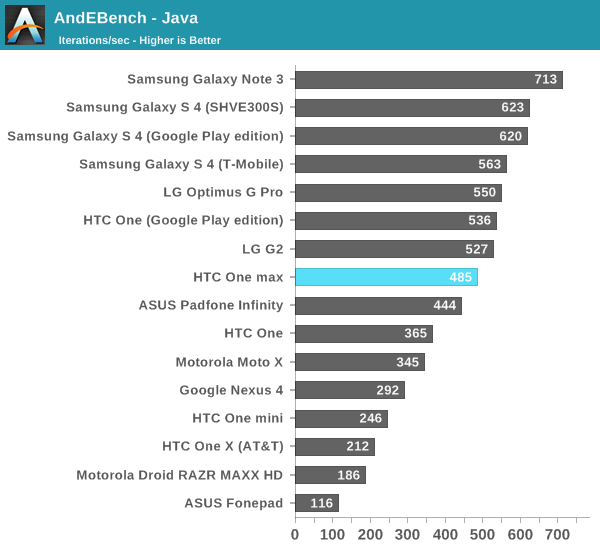
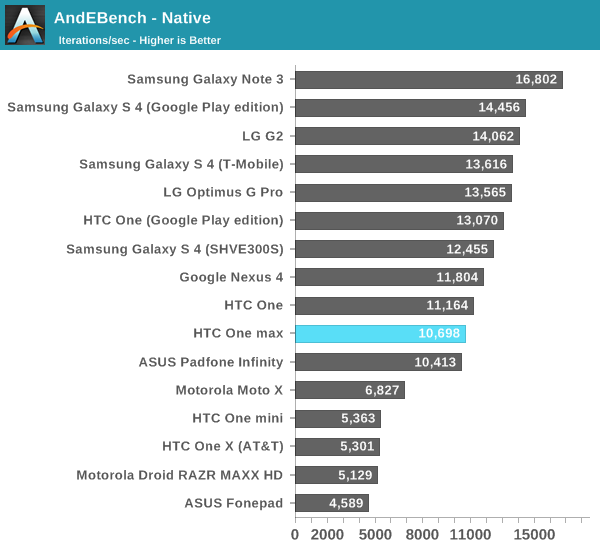
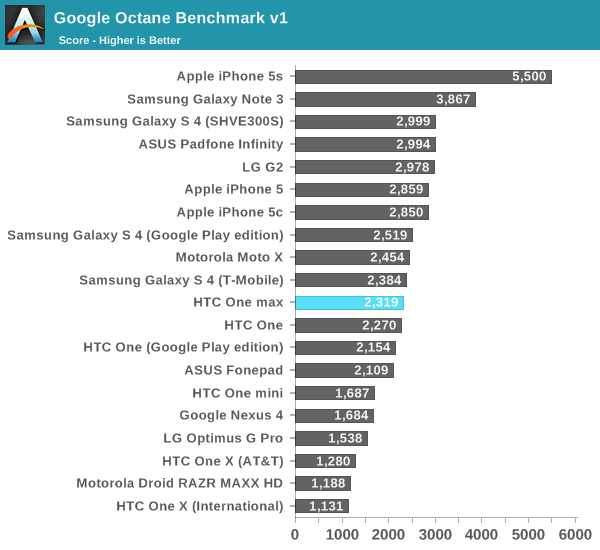
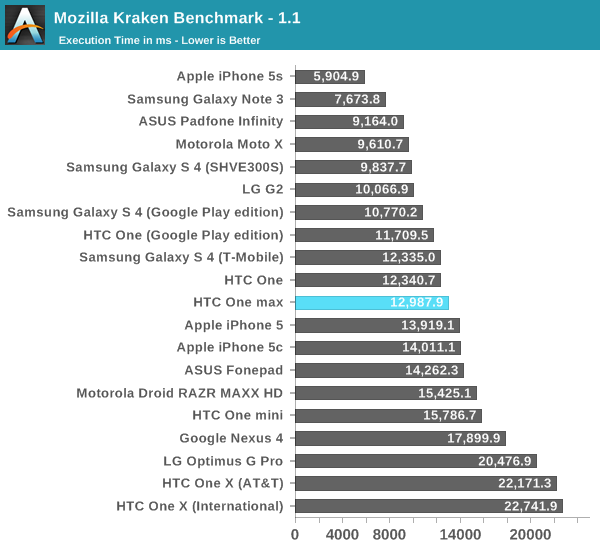
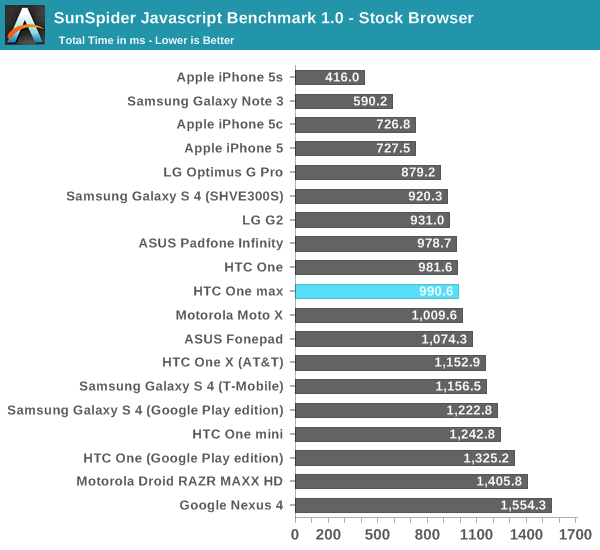
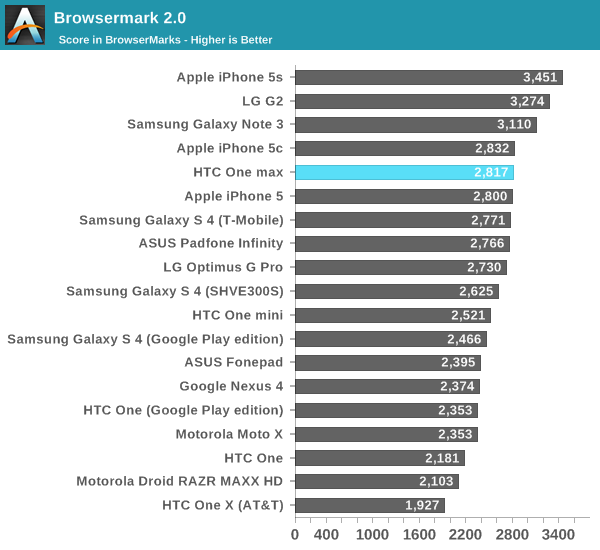
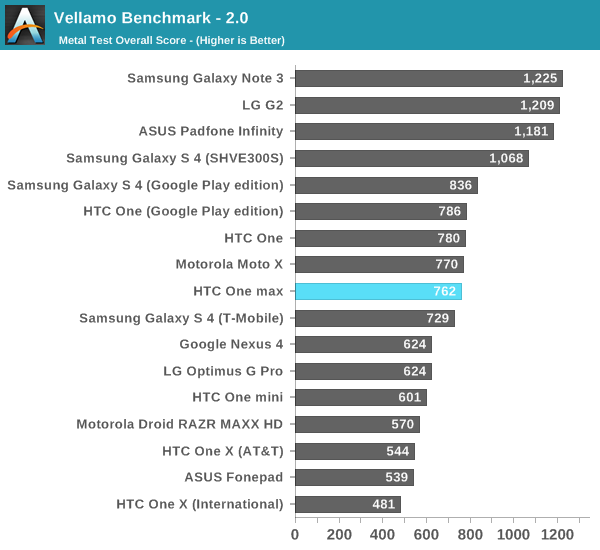
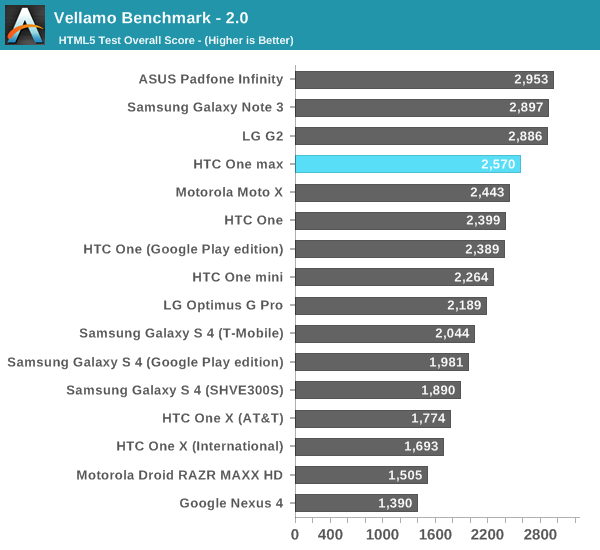
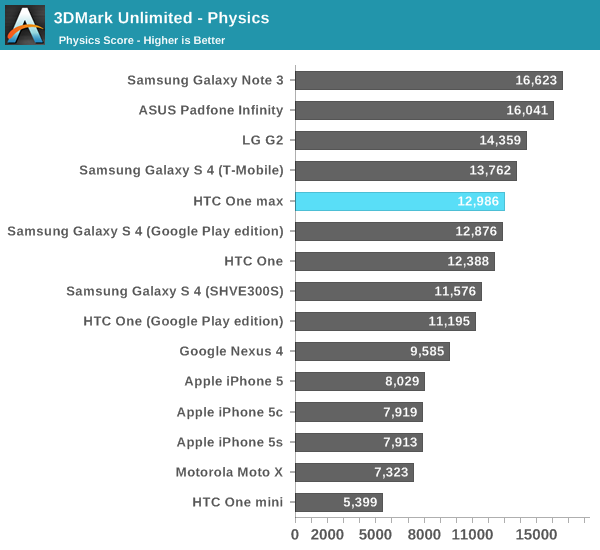
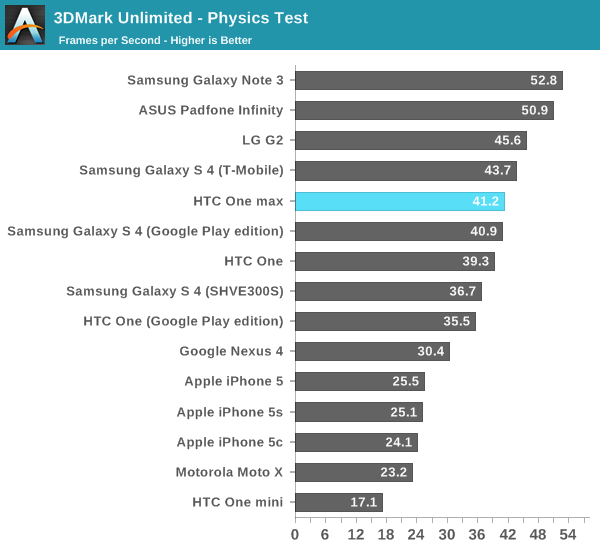
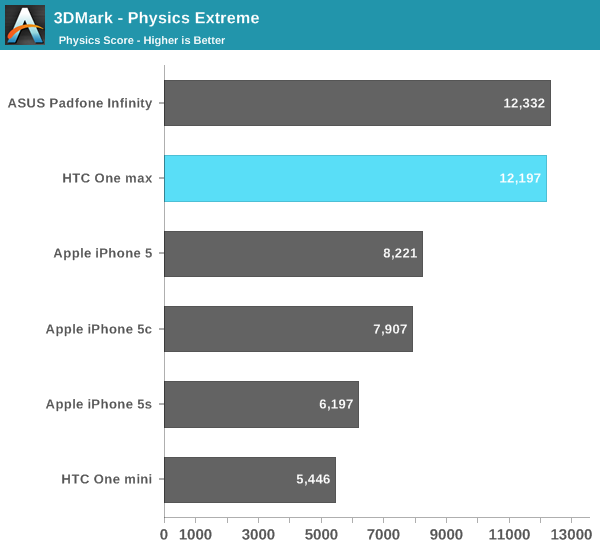
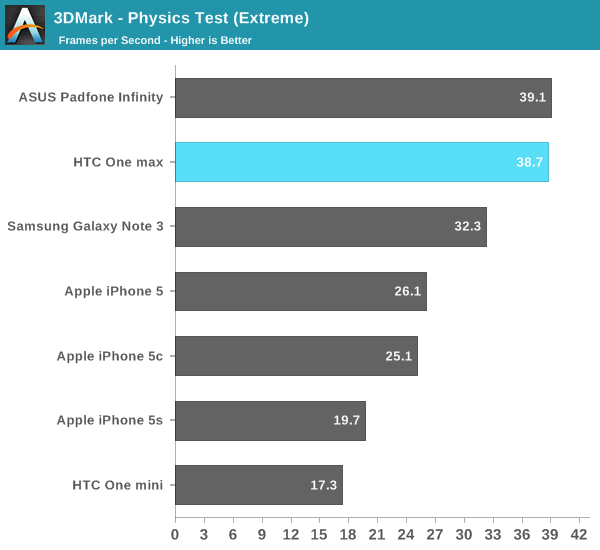
GPU
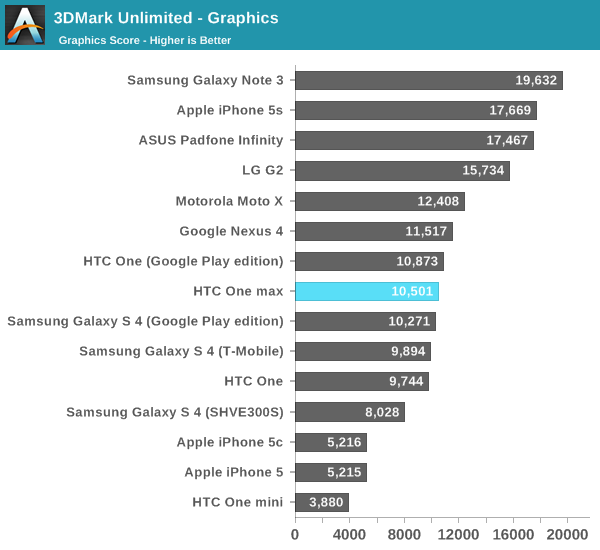
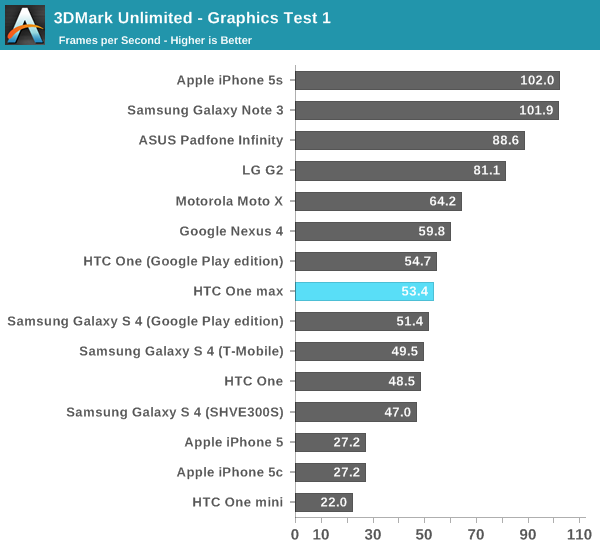
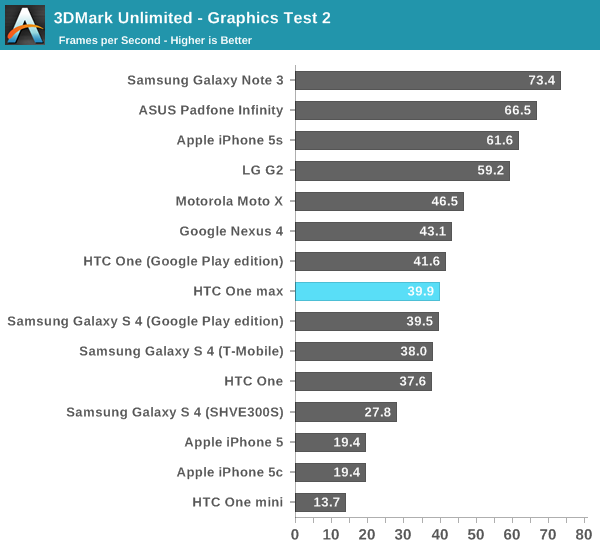
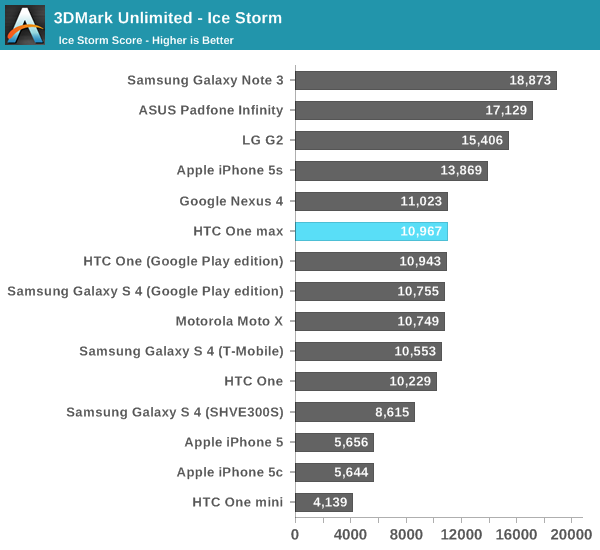
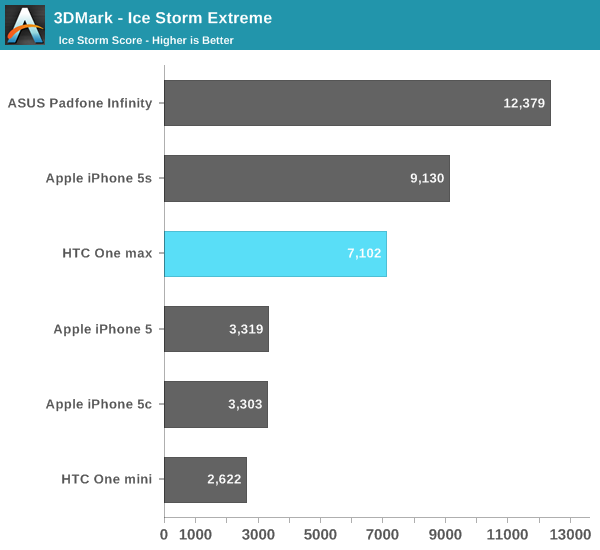
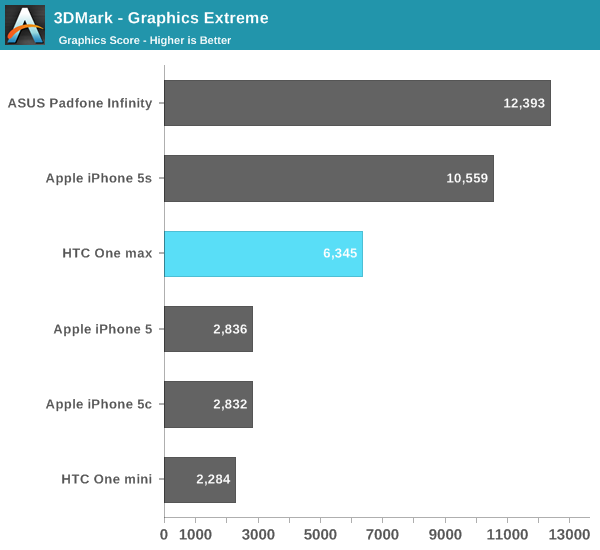
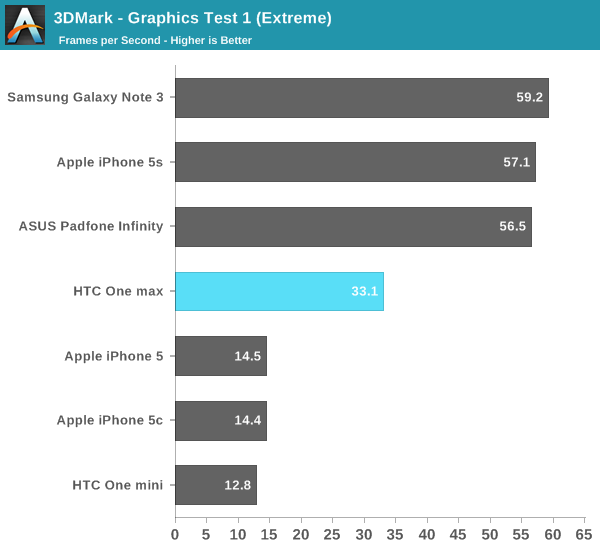
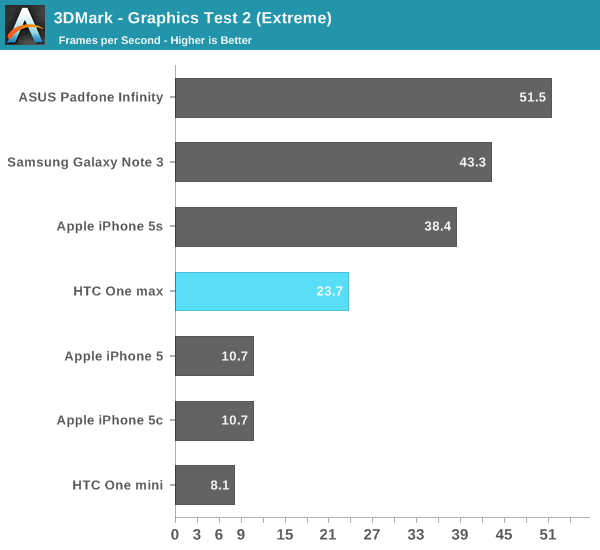
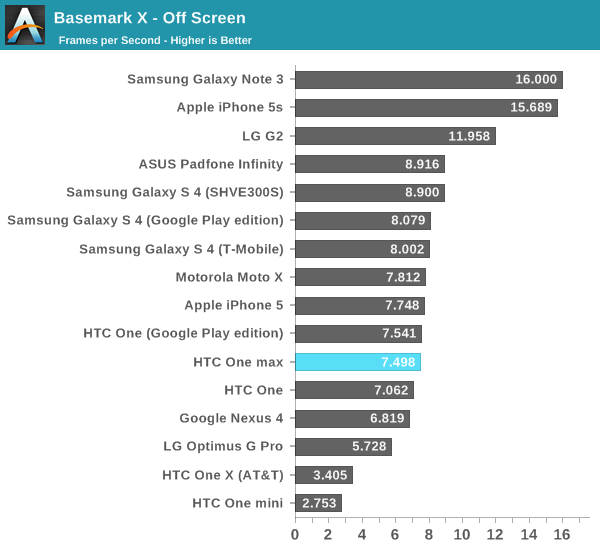
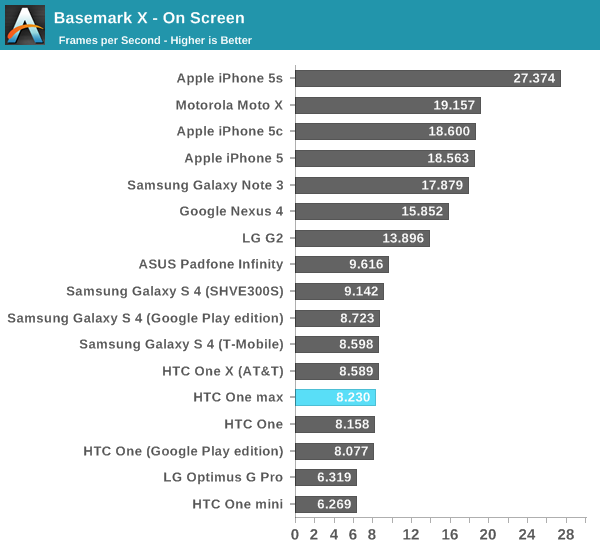
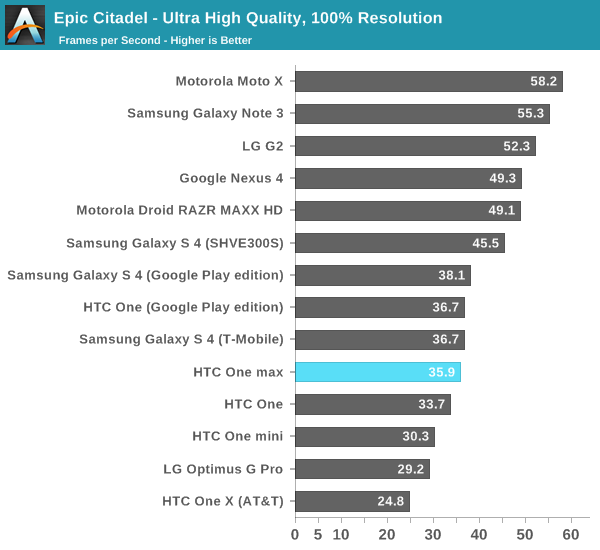
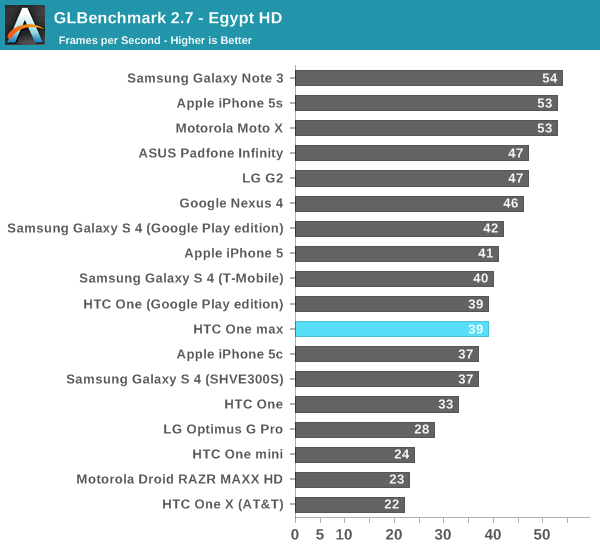
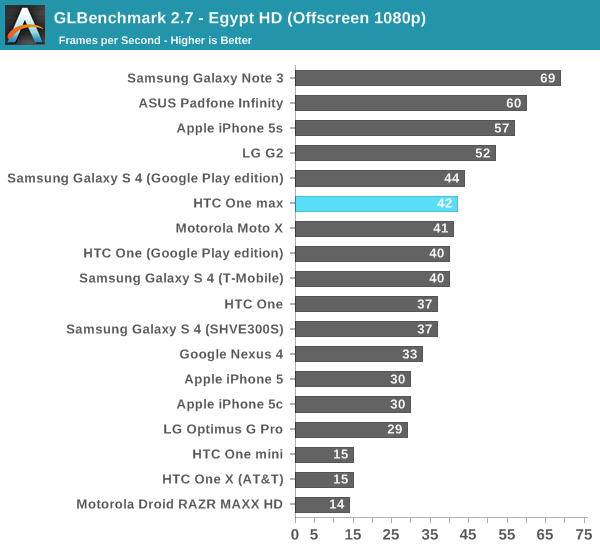
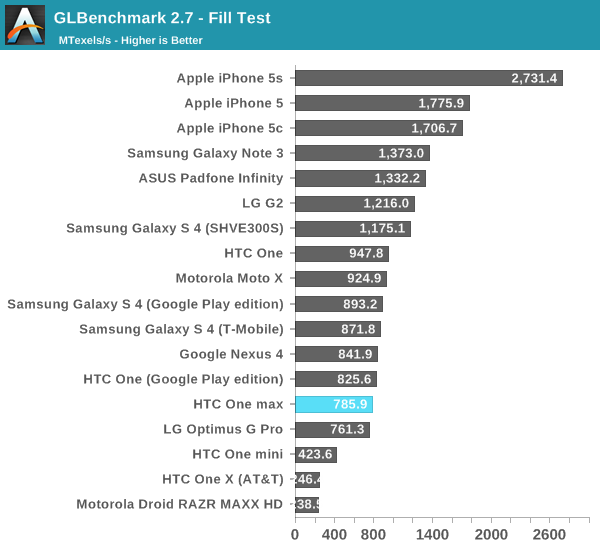

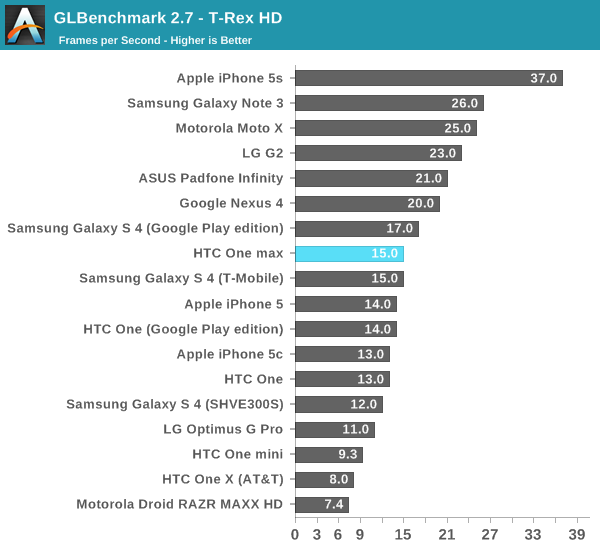
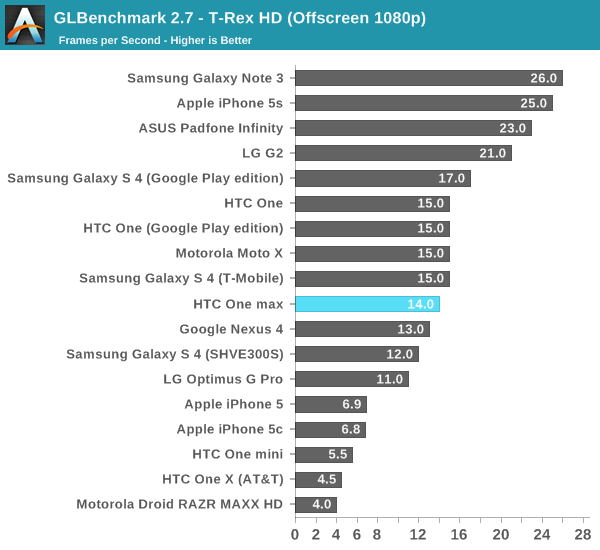
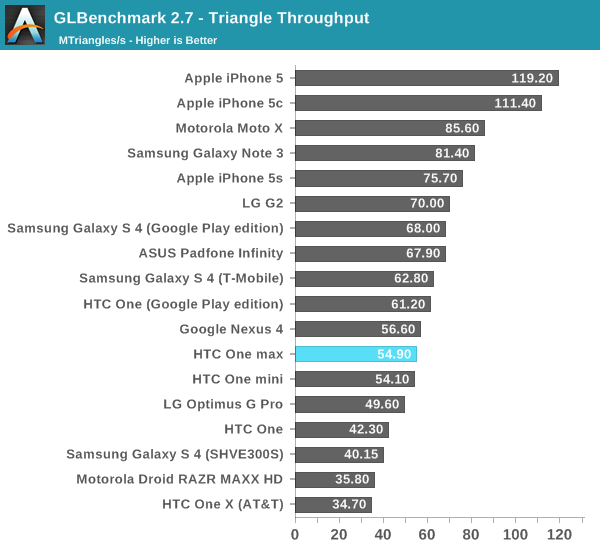
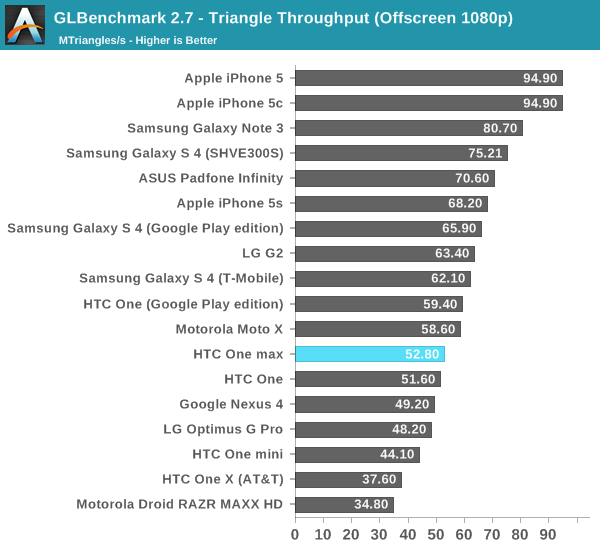
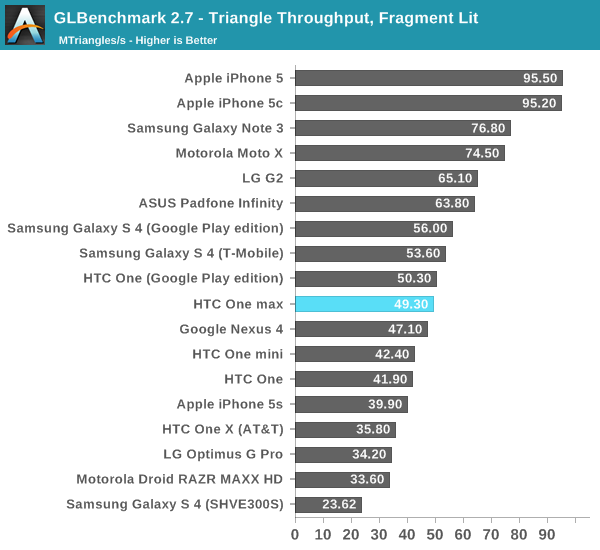
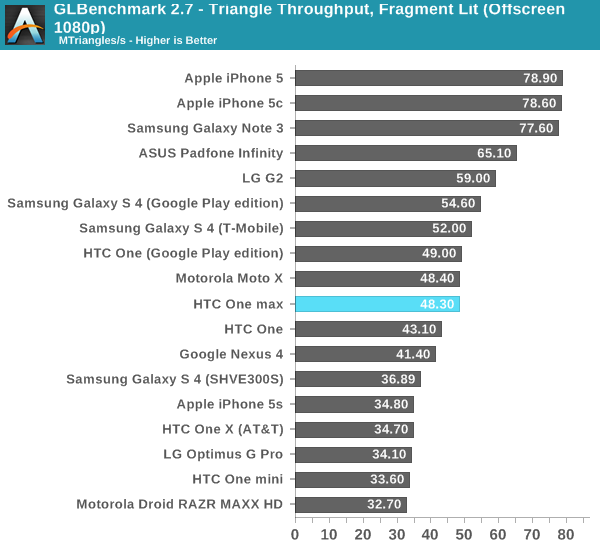
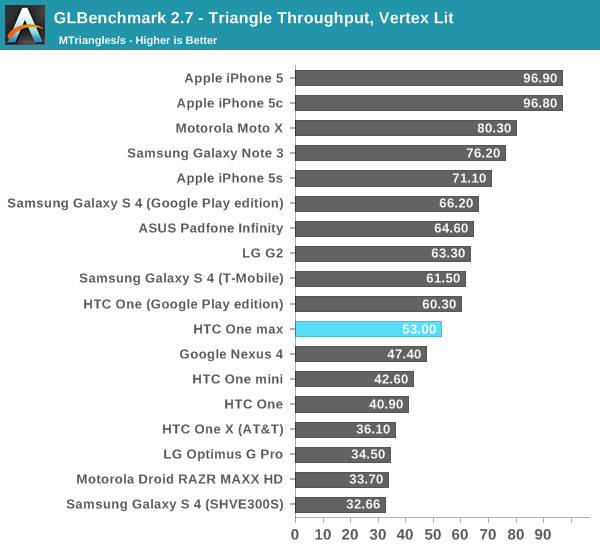
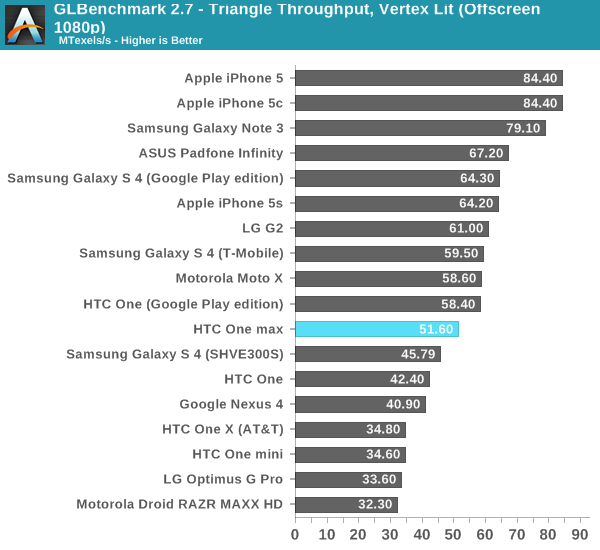
Storage
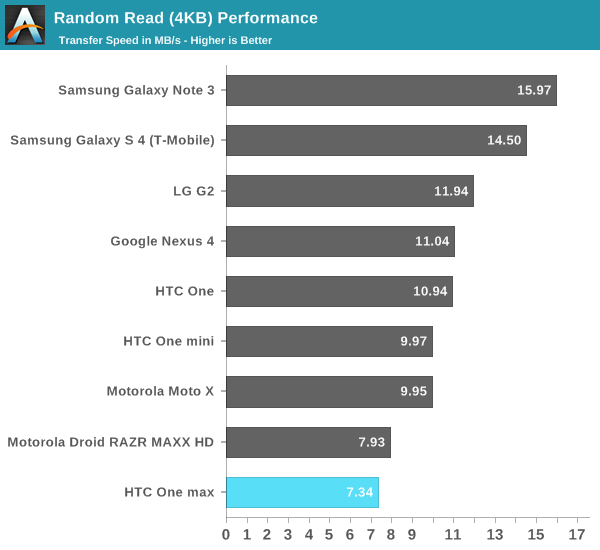
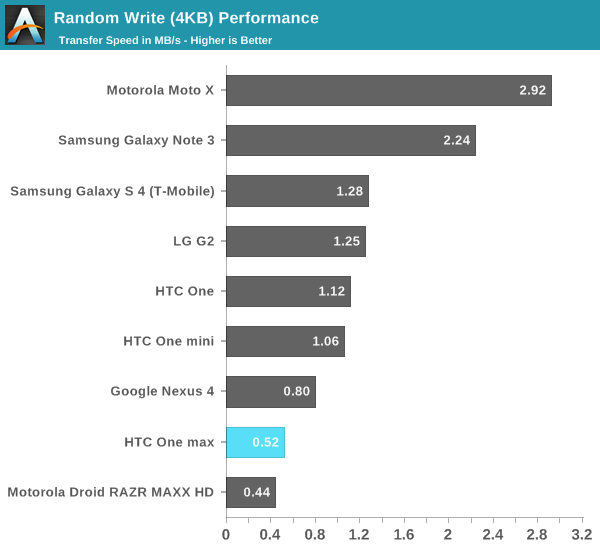
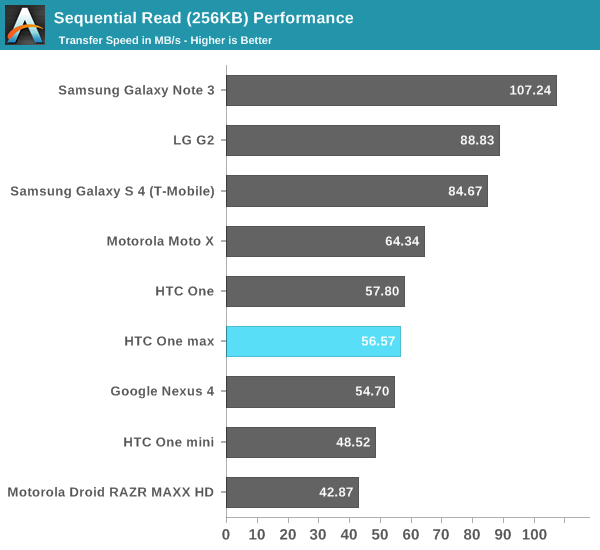
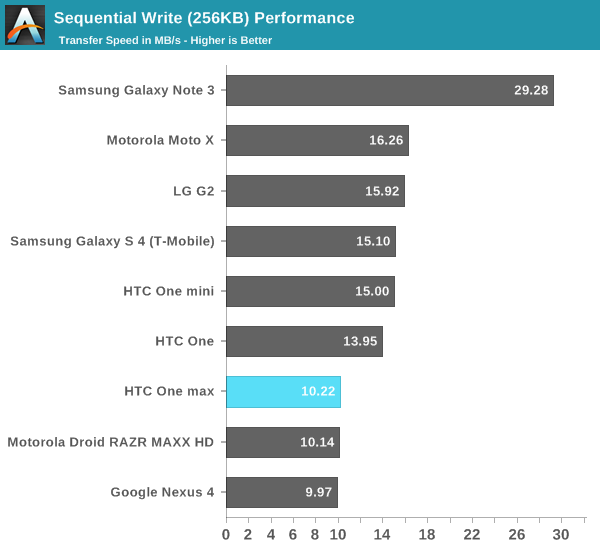
I’m not going to go through all the benchmark results on the One max since again it’s the 1.7 GHz Snapdragon 600 SoC we’re very familiar with at this point. The only oddity is storage performance, where the One max trails in random writes and reads, I'd attribute this to a different eMMC being used. The rest of the results are essentially within the margin of error. I initially suspected that the One max might have a bit more thermal headroom than the One, but this doesn't really seem to play itself out in the results, possibly due to the removable back door.


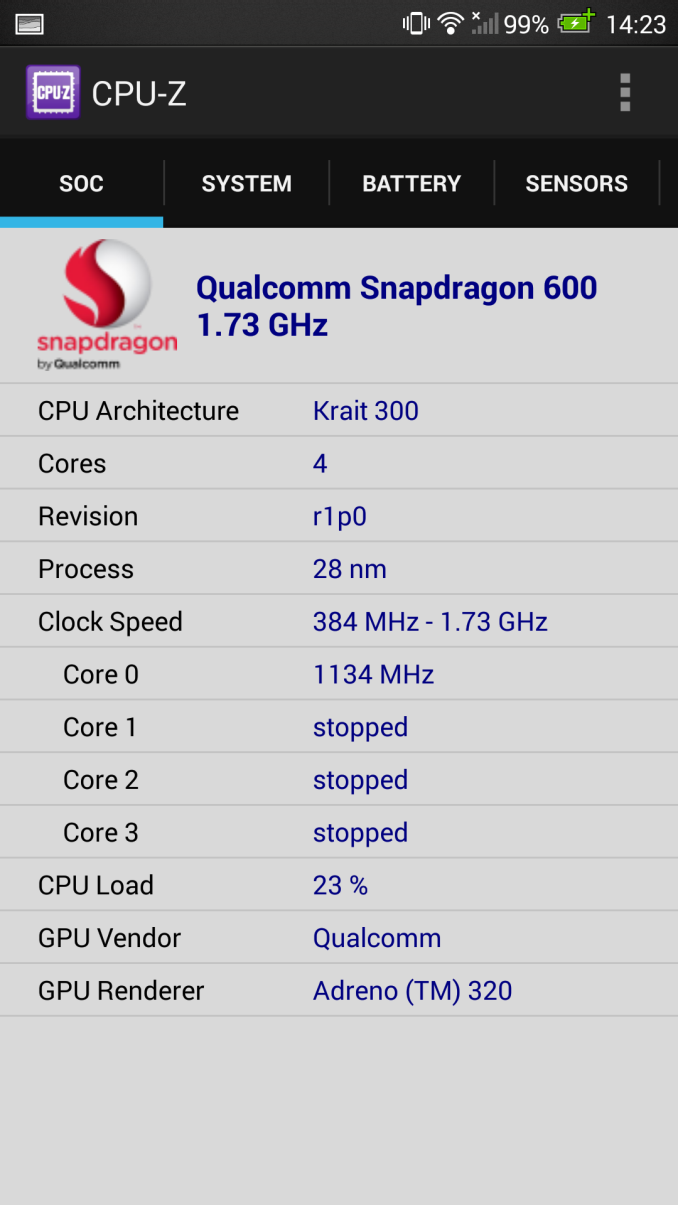
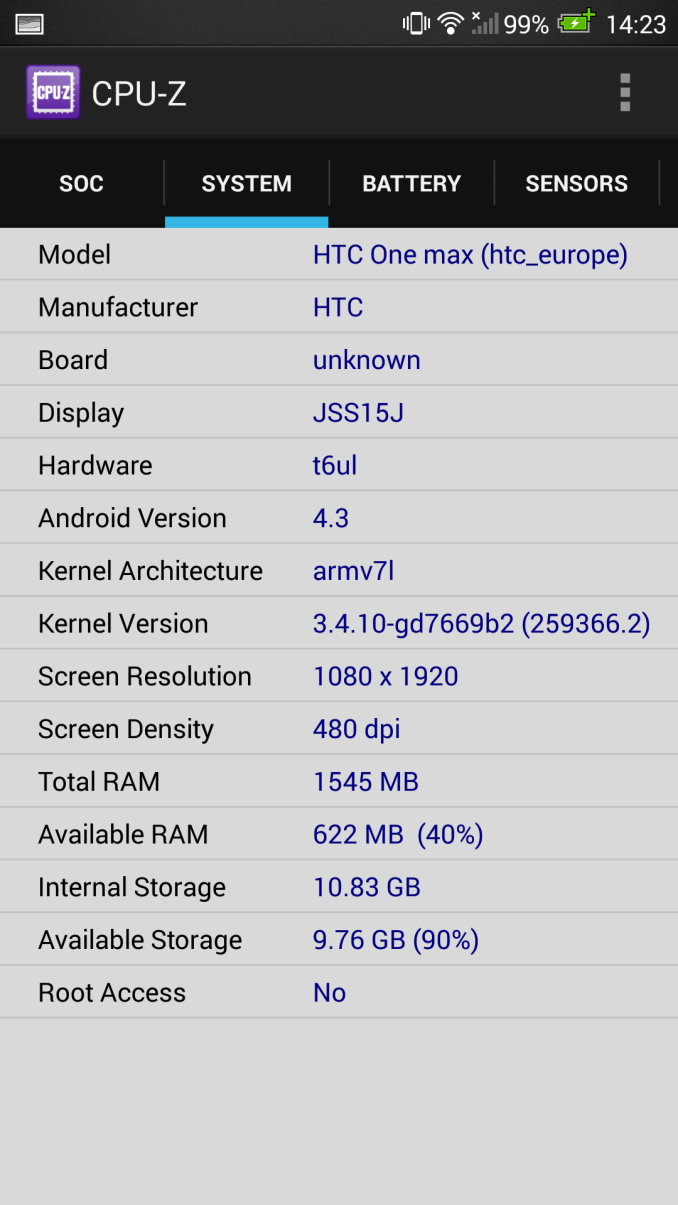








197 Comments
View All Comments
Steven JW FCK - Monday, October 28, 2013 - link
How can you say a "very tiny part of the market" and know for certain? I know so many Samsung smartphone users, and do you want to know how many of them have been asked by Samsung how they use there micro SD cards, and the data storage facilities on their phones?NONE OF THEM!
So where on earth are you pretending to get your data from? And how exactly are you interpreting the numbers? I just fail to believe you actually know the ins and outs of phone storage and micro SD card usage in smartphones upon a broad enough scale to start making allegations like you have.
Believe the reality you want, it only exists in a very small and exceptionally annoying minority.
rabidkevin - Tuesday, October 29, 2013 - link
Bullshitsuperflex - Tuesday, October 29, 2013 - link
Agreed.Someone need to grease their gears. Their screech is annoying and not supported by a vast majority.
lazymangaka - Monday, October 28, 2013 - link
I don't understand the the reviewer's hatred of MicroSD cards. They're a useful thing to have, for every type of user. And, the fact of the matter is, internal storage space has not been rapidly increasing in smartphones. Storage needs have, however. Unlimited data plans are gone for many users, so listening to locally-stored music makes much more sense. In addition to that, the megapixel count of smartphone cameras continue to march north, and those larger file sizes are competing with ever-increasing app sizes. MicroSD expansion just makes sense.I understand what Google was trying to do in nixing external expansion in its Nexus lineup, but it just hasn't played out the way they wanted it to. Instead of getting a phone with 16GB of internal storage and an external expansion slot, we're more likely to just get a phone with 16GB of internal storage. Campaigning for the continued removal of MicroSD storage is doing nothing but harming us all.
Mondozai - Monday, October 28, 2013 - link
Lazumangaka:"I don't understand the the reviewer's hatred of MicroSD cards."
Every reviewer have their irrational foibles that makes no sense. You just have to learn those blindspots and avoid them like the plague with each particular reviewer.
With Brian we know he hates WP8, he dislikes microSD cards and he winces on AMOLED screens. He still puts out very qualified reviews but again, know when to listen, and when to just skip.
Brian Klug - Monday, October 28, 2013 - link
Luckily it's easy to back up the dislikes of microSD (poor Android support, slower than native storage, tradeoffs in build quality) and AMOLED screens (oversaturated, higher power drain, burn in, and sensitive to overheating), and reasons why I can't get anything done on WP8. They aren't blind spots that make no sense, they're just realities.-Brian
PC Perv - Tuesday, October 29, 2013 - link
What an arrogant hoax. You surely realize that every point you raise has counter points, right?How about being on consumer side for once? Make a case why 32 GB should be the bottom line. And why 64 GB should cost $20 more, not $100 more, etc,. Stop worrying about OEMs. They are doing fine. Think for once from consumers standpoint, instead of corporate-hired marketeering.
rabidkevin - Tuesday, October 29, 2013 - link
Hello apple paid spokepersonsuperflex - Tuesday, October 29, 2013 - link
Hello Samsung ShillDentons - Tuesday, October 29, 2013 - link
You're displaying confirmation bias, writ large.We can all find window dressing to support our opinions. That's why so many here object to your rants on AMOLED, microSD, and batteries. Despite your technical expertise, we realize your opinions in those areas has little basis in truth, and is largely just an smug opinion.
Yes, the NAND on many microSD cards is inferior to NAND built into devices. We know and we Don't Care! We use it to hold mass media, videos, photos, and music. What we care about far more is that microSD is often 10 times more cost effective and functions very well indeed.
Really Brian, telling users they really don't need the features they use and love is the height of contemptuous arrogance.